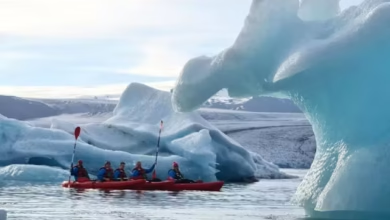
Introduction Of Zhangjiajie National Park
Welcome back to another edition of the Digismartiens Solo Traveler’s Journal! For our first adventure of the year, let’s embark on a journey to one of China’s most breathtaking yet lesser-explored destinations: Zhangjiajie National Park.

Table of Contents
Introduction to Zhangjiajie National Park
Situated in Hunan province, Zhangjiajie National Park is China’s first national park and gained international fame after inspiring the floating Hallelujah Mountains in James Cameron’s Avatar. This UNESCO World Heritage Site boasts over 11,900 acres of stunning sandstone spires, creating a dreamlike landscape that feels almost otherworldly. The sheer scale of these natural formations, with their ever-shifting perspectives, leaves travelers in awe at every turn.
Getting There: From Guangzhou to Zhangjiajie
My journey began with a flight from Bangkok to Guangzhou via China Southern Airlines, followed by a connecting flight to Zhangjiajie. While the airline’s reliability was hit-or-miss, I eventually arrived and stayed at Tu Niu Hostel (Biao Zhi Men) in Wulingyuan—a budget-friendly option just a five-minute walk from the national park’s entrance. The hostel also offers a pickup service from Zhangjiajie Airport for 115 Yuan, which was convenient given the 50-minute drive.
Day 1: Exploring the Upper Zhangjiajie National Park
Early Morning Entry for a Crowd-Free Experience
Given Zhangjiajie’s popularity, I made sure to arrive at the entrance early. Surprisingly, visiting in January—one of the coldest months—meant the park was almost deserted. I purchased a three-day pass for 245 Yuan, underwent fingerprint scanning, and boarded the shuttle bus that would take me into the heart of the park.
Choosing Your Ascent: Cable Car vs. Bailong Elevator
Visitors have two main options to reach the upper regions of the park:
- Cable Car to Tianzi Mountain – Offers a scenic ascent with stunning aerial views.
- Bailong Elevator – A dramatic glass elevator built into a cliff face, reaching 326 meters high.
I opted for the cable car to Tianzi Mountain and planned to descend via the Golden Whip Stream trail instead of taking the elevator back down.
The Majestic Views of Tianzi and Yuanjiajie Mountains
Even the cable car ride itself was mesmerizing, as towering spires gradually emerged from the mist. Since I arrived early in the low season, the shuttle buses were not operating yet, meaning I had to walk between viewpoints—something that turned out to be a blessing in disguise, as I had the paths almost entirely to myself.
Despite the morning fog, the mountains exuded an ethereal, mysterious beauty. It was a surreal experience, witnessing these formations in near solitude, as opposed to the usual crowded scenes seen in peak seasons.
The Winter Experience: Pros and Cons
Pros:
- Fewer crowds, allowing for an intimate connection with nature.
- Unique winter landscapes, with mist adding to the dramatic scenery.
- Accommodation prices are generally lower.
Cons:
- Extremely cold temperatures (3–5°C), requiring multiple layers even indoors.
- Fewer open restaurants and services due to low tourist traffic.
- Shuttle buses run less frequently in the mornings, requiring more walking.
Final Thoughts
Zhangjiajie National Park is a vast and enchanting destination, offering an unforgettable adventure for those who venture beyond the beaten path. Whether you prefer the energy of peak season or the peaceful solitude of winter, this park will leave you spellbound with its natural wonders.
Stay tuned for Part 2, where I’ll explore the lower Zhangjiajie National Park, including the famous Golden Whip Stream!





